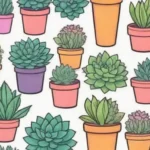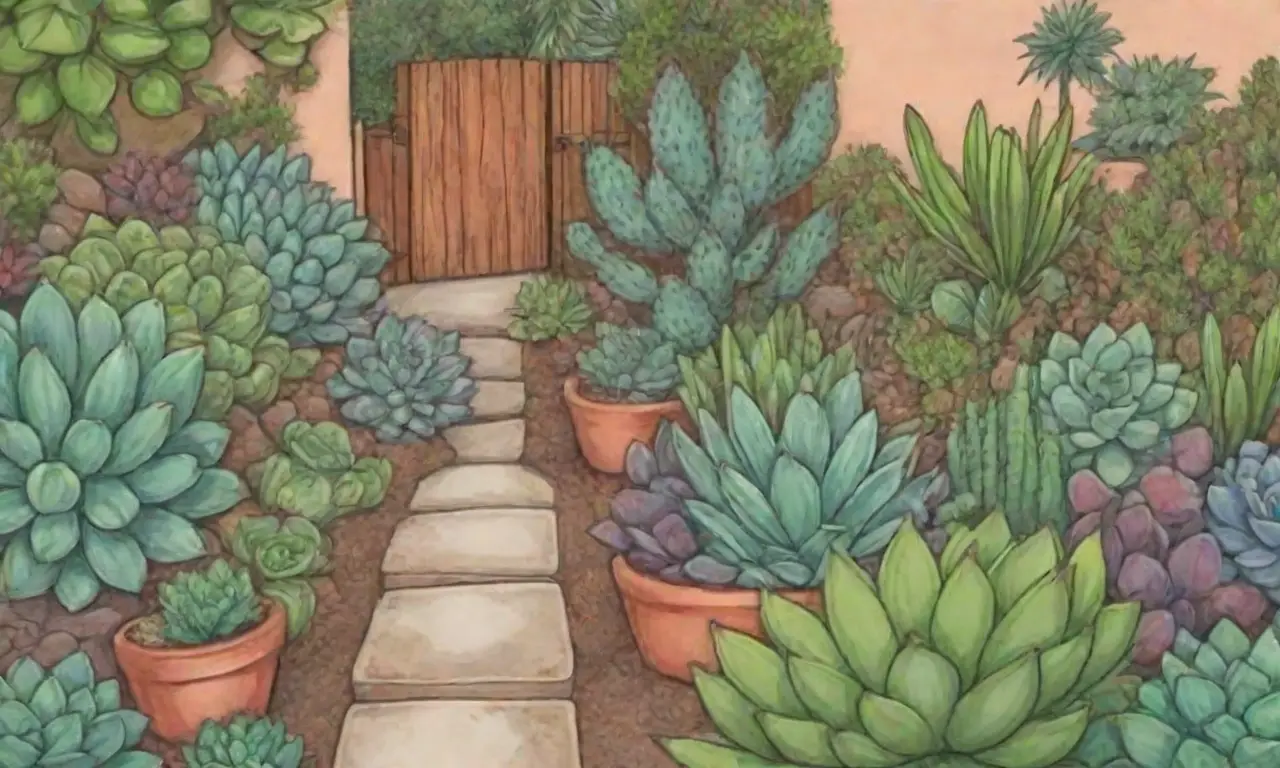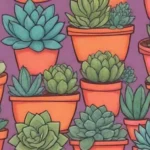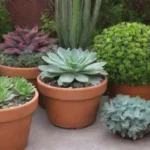How to Use Succulents to Enhance Entryways and Pathways

Introduction
When it comes to elevating the aesthetic appeal of your home, the entryway and pathways are two crucial areas that shouldn’t be overlooked. These spaces serve as the first impression for visitors and set the tone for the rest of your home. One of the most striking ways to enhance these areas is by incorporating succulents. Known for their resilience and diversity, succulents can transform your entryway and pathways into vibrant green oases. In this article, we will delve deep into how succulents can be utilized effectively in these areas, from design ideas to maintenance considerations.
This article aims to offer you innovative strategies for using succulents in your entryway and pathways. We will explore various design styles that can complement your home while ensuring that you choose the right types of succulents. We will also provide guidance on placement, maintenance, and how to create a cohesive look that enhances your outdoor spaces.
Choosing the Right Succulents for Your Space
To start off, one of the most crucial steps in enhancing your entryway and pathways with succulents is choosing the right varieties. Not all succulents are created equal; some thrive better in shaded areas while others flourish in full sunlight. Echeveria, for example, is an excellent choice for sunny spots, showcasing stunning rosettes in vibrant colors, but may not do as well in excessive shade. On the other hand, Hoya plants, often referred to as wax plants, can tolerate low light and can be a lovely addition to a covered entryway.
When selecting succulents, you can also consider seasonality. Some species exhibit unique blooms during specific seasons. Aloe vera, for instance, produces stunning yellow flowers in the spring, adding a splash of color when many other plants are dormant. Understanding the characteristics and growth patterns of various succulents will allow you to make informed choices that are visually appealing and sustainable in your environment.
Another important aspect to consider is the size and growth rate of the succulents you choose. If your entryway has limited space, opting for smaller varieties like Haworthia or Jade plants can keep the area feeling open and inviting. Conversely, if you have a more expansive area, larger succulents can act as focal points. It’s imperative to take the time to plan which succulents will thrive best in your specific geographic location and climate. A local nursery can often provide valuable insight into what will flourish in your environment.
Design Ideas for Entryways
Creating a Succulent Garden Bed
One of the most impactful ways to utilize succulents in your entryway is to create a succulent garden bed. This can be achieved by designating a small area either in the ground or a large container specifically for succulents. This focal point can serve as a welcoming feature for anyone arriving at your home. When designing this garden bed, consider grouping the succulents in odd numbers, as this creates a more natural and visually appealing arrangement.
Utilizing different textures, colors, and heights adds depth and interest. Sedums and graptopetalum provide varied textures while Aloe and Echeveria add striking color variations. They can be interspersed with small stones or gravel to give a clean finish and to help with drainage, which is crucial for succulent health. The use of ornamental edging can also serve to define this space, giving it structure and guiding visitors directly to the entryway.
 How to Use Succulent Monocultures for Streamlined Design
How to Use Succulent Monocultures for Streamlined DesignA key aspect of designing a succulent garden bed is also considering the irrigation system. While succulents are drought-tolerant, they will still require some water, especially when establishing. Drip irrigation systems can be an excellent choice to provide just the right amount of water without over-saturating the soil. Draining is crucial, so using pots or raised beds that allow for excess water to escape will help maintain the health of your succulents long term.
Incorporating Succulents into Containers
For a more flexible approach, using containers planted with succulents can offer unique design opportunities. Planters can be placed on steps, beside doors, or along the pathway leading to the entryway. The beauty of using containers is the ability to change them seasonally or to rearrange them for different occasions or events. Choose colorful pots that either match or contrast your home’s exterior, thus creating a cohesive design that enchants visitors.
Layering different types of succulents in the same container can create a breathtaking effect. For example, taller, more upright succulents like Agave can serve as centerpieces while trailing varieties like String of Pearls can spill over the edges for an ethereal look. This layered effect not only captures attention but will also create a thriving ecosystem; taller succulents will provide shade for smaller varieties, mimicking their natural habitat.
When arranging succulents in containers, remember accessibility. Make sure the heights of the plants do not obscure the entryway or the path, ensuring that they are safe and easy to navigate. If you choose to arrange your succulents in tiered planters, it can create an even more dynamic visual experience, adding height and dimension to the space.
Pathway Enhancements with Succulents

Lining Pathways with Succulent Borders
Transforming pathways with succulents is another remarkable way to create inviting and beautiful outdoor spaces. Lining pathways with succulent borders provides not only visual appeal but also a fitting welcome for guests. This technique can incorporate either ground-level planting or raised beds, depending on the space available and your personal preferences.
Succulents such as Creeping Thyme or Moss Rose are excellent ground covers due to their low growth habit and willingness to spread. They can be planted close together but should also be appropriately spaced to ensure proper air circulation and prevent rot. These types of succulents can soften hard landscaping edges and add a luscious green touch to pathways.
 From Borders to Focal Points: Using Succulents Effectively
From Borders to Focal Points: Using Succulents EffectivelyIntegrating various types of succulents along the border can create a lively spectacle. Tall varieties can be interspersed with shorter plants, maintaining interest while avoiding a cluttered appearance. The use of decorative stones or pebbles can enhance the overall look, serving as a visual transition between the plants and the pathway, and also improving drainage. By consistently sprinkling the paths with succulents, you’ll create an irresistible flow that draws people deeper into your garden.
Vertical Displays Along Pathways
Incorporating vertical displays of succulents along pathways is an innovative approach that adds dimension and creativity to your landscape. Vertical gardens can utilize wall-mounted planters, trellises, or even creative installations created from wooden pallets or ladders. This design not only saves space but also allows for an eye-catching display that defies the norm, elevating your landscape to new heights.
Wall-mounted planters can be an excellent choice for smaller gardens or limited spaces, while trellises can serve as stunning act as natural fences leading to your entryway. When selecting plants for these displays, think about mixing and matching various succulents to achieve a tapestry of color and form. Dramatic choices like Echeveria with its classic rosette formation can be complemented with the softer textures of Hens and Chicks or the cascading form of Burro’s Tail.
While arranging your vertical displays, consider how sunlight will hit them throughout the day, ensuring they’ll receive enough to thrive. Additionally, the placement must be practical so that they do not obstruct pathways or create hazards. Adding lighting to highlight these vertical gardens at night will further enhance the charm and allure of your entryway and pathways, creating a welcoming atmosphere even after the sun goes down.
Conclusion
In conclusion, using succulents to enhance your entryways and pathways opens a world of creativity and aesthetic appeal. From carefully selecting the right varieties to actively applying innovative design ideas, these resilient plants can transform bland spaces into lush environments that host both beauty and function. The options are vast; whether you choose to create a cohesive garden bed, utilize versatile containers, or develop stunning vertical displays, succulents can serve as the perfect embodiment of your personal style while enhancing curb appeal.
Moreover, succulents are low-maintenance plants that thrive in a variety of conditions, making them ideal for many homeowners. Their adaptability, along with their fascinating textures and colors, provides endless possibilities for artistic expression in your entryway and pathways. With proper planning and execution, you can create spaces that engage all of the senses and fill your home with warmth and hospitality.
Finally, remember to assess your specific environment, taking note of sun exposure, soil type, and water drainage to ensure the best outcomes for your succulent landscape. Ultimately, with some thoughtful choices and a little bit of elbow grease, you can curate pathways and entryways that invite everyone into a serene oasis, embodying nature's beauty right at your doorstep.
 Creative Succulent Displays for Front Yards That Dazzle
Creative Succulent Displays for Front Yards That DazzleIf you want to read more articles similar to How to Use Succulents to Enhance Entryways and Pathways, you can visit the Landscaping Ideas category.
